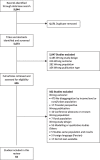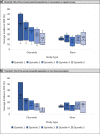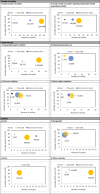The economics of healthcare access: a scoping review on the economic impact of healthcare access for vulnerable urban populations in low- and middle-income countries
- PMID: 36585704
- PMCID: PMC9805259
- DOI: 10.1186/s12939-022-01804-3
The economics of healthcare access: a scoping review on the economic impact of healthcare access for vulnerable urban populations in low- and middle-income countries
Abstract
Background: The growing urban population imposes additional challenges for health systems in low- and middle-income countries (LMICs). We explored the economic burden and inequities in healthcare utilisation across slum, non-slum and levels of wealth among urban residents in LMICs.
Methods: This scoping review presents a narrative synthesis and descriptive analysis of studies conducted in urban areas of LMICs. We categorised studies as conducted only in slums, city-wide studies with measures of wealth and conducted in both slums and non-slums settlements. We estimated the mean costs of accessing healthcare, the incidence of catastrophic health expenditures (CHE) and the progressiveness and equity of health expenditures. The definitions of slums used in the studies were mapped against the 2018 UN-Habitat definition. We developed an evidence map to identify research gaps on the economics of healthcare access in LMICs.
Results: We identified 64 studies for inclusion, the majority of which were from South-East Asia (59%) and classified as city-wide (58%). We found severe economic burden across health conditions, wealth quintiles and study types. Compared with city-wide studies, slum studies reported higher direct costs of accessing health care for acute conditions and lower costs for chronic and unspecified health conditions. Healthcare expenditures for chronic conditions were highest amongst the richest wealth quintiles for slum studies and more equally distributed across all wealth quintiles for city-wide studies. The incidence of CHE was similar across all wealth quintiles in slum studies and concentrated among the poorest residents in city-wide studies. None of the definitions of slums used covered all characteristics proposed by UN-Habitat. The evidence map showed that city-wide studies, studies conducted in India and studies on unspecified health conditions dominated the current evidence on the economics of healthcare access. Most of the evidence was classified as poor quality.
Conclusions: Our findings indicated that city-wide and slums residents have different expenditure patterns when accessing healthcare. Financial protection schemes must consider the complexity of healthcare provision in the urban context. Further research is needed to understand the causes of inequities in healthcare expenditure in rapidly expanding and evolving cities in LMICs.
Keywords: Catastrophic health expenditure; Costs; Health economics; Informal settlements; Low; Middle-income countries; Scoping review; Slum.
© 2022. The Author(s).
Conflict of interest statement
The authors declare that they have no competing interests.
Figures




References
-
- UN-Habitat. Urbanization and development: Emerging Futures. 2016. Epub ahead of print 2016. DOI: 10.1097/NCM.0000000000000166.
-
- UN-Habitat. The Value of Sustainable Urbanization World Cities Report 2020 Key Messages Summary. 2020.
-
- Abascal Á, Rothwell N, Shonowo A, et al. ‘Domains of Deprivation Framework’ for Mapping Slums, Informal Settlements, and Other Deprived Areas in LMICs to Improve Urban Planning and Policy: A Scoping Review. Preprints 2021; 1–37.
-
- Elsey H, Thomson DR, Lin RY, et al. Addressing inequities in urban health : do decision-makers have the data they need ? report from the urban health data special session at international conference on urban health Dhaka 2015. J Urban Heal . 2016;93:526–537. doi: 10.1007/s11524-016-0046-9. - DOI - PMC - PubMed
Publication types
MeSH terms
Grants and funding
LinkOut - more resources
Full Text Sources

